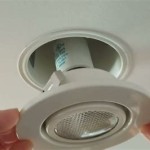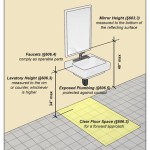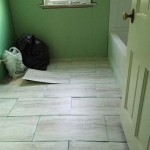Diagnosing and Resolving Issues with a Non-Functional Bathroom Sink Mixer Tap
A malfunctioning bathroom sink mixer tap can be a significant inconvenience. These taps, designed to deliver both hot and cold water at a desired temperature through a single spout, are a standard fixture in modern bathrooms. When they fail to function correctly, the problem can stem from various sources, ranging from simple blockages to more complex internal component failures. Identifying the root cause is crucial for an effective and lasting repair.
This article aims to provide a comprehensive guide to diagnosing and resolving common issues that cause a bathroom sink mixer tap to stop working. It will cover several key areas, including identifying the symptoms, performing preliminary checks, and exploring potential solutions for different problem types. Following these steps systematically can help homeowners, landlords, or maintenance personnel address the issue efficiently and potentially avoid the expense of calling a professional plumber.
Understanding the Anatomy of a Bathroom Sink Mixer Tap
Before troubleshooting, it's essential to understand the basic components of a mixer tap. These taps typically consist of the following:
Spout: The outlet from which the mixed hot and cold water flows.
Handles or Levers: Controls that regulate the flow of hot and cold water. Some mixers use separate handles, while others use a single lever that moves left and right to adjust the temperature and up and down to control the water flow.
Cartridge: A key internal component responsible for mixing the hot and cold water. It typically contains ceramic discs that slide against each other to control the water ratio and flow. In some older models, washers and springs are used instead of a cartridge.
Valve Body: The main housing that contains the cartridge or valve mechanism and connects to the hot and cold water supply pipes.
Aerator: A mesh screen at the end of the spout that mixes air with the water to create a smooth, non-splashing flow.
Flexible Connector Hoses: Connect the tap to the hot and cold water supply pipes under the sink.
Understanding the function of each part helps pinpoint potential problem areas when diagnosing a faulty tap.
Common Symptoms and Their Potential Causes
The first step in addressing a non-functional mixer tap is to carefully observe the symptoms. This can provide valuable clues about the underlying cause. Here are some common symptoms and their potential explanations:
No Water Flow at All: If no water flows from the tap, the problem could be with the main water supply, the shut-off valves, or a blockage within the tap itself. It could also indicate a problem with the cartridge or valve if both hot and cold supplies are functional elsewhere in the property.
Low Water Pressure: Reduced water pressure could indicate a blockage in the aerator, the flexible connector hoses, or the cartridge. It could also be a symptom of a more widespread problem in the plumbing system, such as low water pressure from the municipal supply or a partially closed valve elsewhere.
Only Hot or Cold Water Flows: If only one temperature of water flows, it suggests a problem with the supply to the other temperature. This could be a closed shut-off valve, a kinked or blocked flexible connector hose, or a fault within the cartridge preventing water from one side from flowing.
Water Leaks: Leaks can occur from various points on the tap, including around the base, the handles, or the spout. Leaks typically indicate worn-out O-rings, loose connections, or a damaged cartridge. A leak from the spout, even when the tap is turned off, often points to a faulty cartridge.
Difficulty Turning the Handles or Lever: Stiff handles or levers can indicate a buildup of mineral deposits or corrosion within the tap mechanism. This often requires cleaning or lubrication of the affected parts.
Noisy Operation: Grinding, squealing, or whistling noises during operation can indicate worn-out components within the tap, such as the cartridge or washers. These noises often worsen over time and can eventually lead to complete failure.
Troubleshooting Steps and Potential Solutions
Once the symptoms have been identified, the next step is to systematically troubleshoot the problem. The following steps outline a general approach to diagnosing and resolving common issues:
1. Preliminary Checks:
Verify Water Supply: Ensure that the main water supply to the house is turned on and that there are no known water outages in the area. Check other taps in the house to confirm that they are functioning correctly. If other taps are also affected, the problem likely lies with the main water supply rather than the individual tap.
Check Shut-Off Valves: Locate the shut-off valves under the sink that control the hot and cold water supply to the tap. Ensure that both valves are fully open. Sometimes, these valves can be accidentally partially closed, restricting water flow. If the valves are stiff or difficult to turn, try lubricating them with a silicone-based lubricant.
Inspect Flexible Connector Hoses: Examine the flexible connector hoses that connect the tap to the shut-off valves. Look for any kinks, bends, or signs of damage. Kinks can restrict water flow, while damage can cause leaks. Replace any damaged hoses.
Clean the Aerator: The aerator is prone to collecting mineral deposits and debris, which can restrict water flow. Unscrew the aerator from the spout (usually by hand or with pliers), disassemble it, and clean all the components thoroughly. Soak the parts in white vinegar to dissolve mineral buildup. Reassemble the aerator and test the water flow.
2. Addressing Specific Issues:
No Water Flow (After Preliminary Checks): If the preliminary checks don't resolve the issue, the problem likely lies within the tap itself. The next step is to disassemble the tap and inspect the cartridge or valve mechanism.
Cartridge Inspection and Replacement: Turn off the water supply to the tap. Remove the handle or lever according to the manufacturer's instructions (usually by loosening a setscrew or prying off a decorative cap). Once the handle is removed, you should be able to access the cartridge. Remove the retaining clip or nut that holds the cartridge in place. Carefully pull out the cartridge. Inspect the cartridge for damage, such as cracks, breaks, or mineral buildup. If the cartridge is damaged or heavily corroded, replace it with a new one of the same type. Ensure the new cartridge is properly seated and secured with the retaining clip or nut. Reassemble the handle and test the water flow.
Valve Inspection and Repair (Older Models): For older taps with separate hot and cold valves, inspect the washers and springs within each valve. Worn-out washers can restrict water flow and cause leaks. Replace any worn or damaged washers and springs. Ensure the valve components are properly lubricated before reassembly.
Low Water Pressure (After Aerator Cleaning): If cleaning the aerator doesn't improve water pressure, the blockage might be further up the line. Disconnect the flexible connector hoses from the tap and flush them out with water. This can dislodge any debris that is obstructing the flow. If the water pressure is still low after flushing the hoses, the problem may be in the water supply pipes within the wall, requiring professional plumbing assistance.
Leaks: Identifying the source of the leak is crucial. Tighten any loose connections, such as the nuts connecting the flexible connector hoses to the tap. Replace any worn-out O-rings or seals around the base of the spout, the handles, or the cartridge. If the cartridge itself is leaking, replace it. For leaks originating from the valve body, professional repair or replacement of the entire tap may be necessary.
Stiff Handles or Lever: Turn off the water supply to the tap. Disassemble the handle or lever and clean the internal components with a mild detergent and warm water. Remove any mineral deposits or corrosion. Lubricate the moving parts with a silicone-based lubricant. Reassemble the handle or lever and test the operation.
Noisy Operation: Noisy operation often indicates worn-out components. Replace the cartridge or valve mechanism, as appropriate. Ensure that all components are properly lubricated during reassembly.
3. Professional Assistance:
If the troubleshooting steps above do not resolve the issue, or if you are uncomfortable performing the repairs yourself, it is recommended to consult a qualified plumber. Complex plumbing problems, such as issues within the water supply pipes or within the wall, often require specialized tools and expertise to diagnose and repair correctly. Attempting to fix these problems without the necessary skills and knowledge can potentially lead to further damage and more costly repairs.
Preventative Maintenance
Regular preventative maintenance can help extend the life of your bathroom sink mixer tap and prevent many common problems. The following tips can help:
Clean the Aerator Regularly: Clean the aerator every few months to remove mineral deposits and debris. This will help maintain optimal water flow and prevent low water pressure.
Lubricate Moving Parts: Periodically lubricate the moving parts of the tap, such as the handles or lever, with a silicone-based lubricant. This will help keep them operating smoothly and prevent stiffness.
Inspect for Leaks: Regularly inspect the tap for leaks. Address any leaks promptly to prevent water wastage and potential damage to surrounding surfaces.
Use a Water Softener: If you live in an area with hard water, consider installing a water softener. Hard water can cause mineral deposits to build up within the tap, leading to blockages and other problems.
Avoid Over-Tightening: When tightening connections, avoid over-tightening. Over-tightening can damage the threads and cause leaks.
By following these preventative maintenance tips, you can help ensure that your bathroom sink mixer tap continues to function properly for years to come.

How To Change A Washer On Mixer Tap Living By Homeserve

How To Repair A Mixer Tap Leaking At The Swivel Base

How To Fit A Basin Mixer Tap Victoriaplum Com

Explaining How Mixer Taps Work In 4 Simple Steps

Boyel Living 2 Double Handle Wall Mounted Bathroom Kitchen Faucet Basin Mixer Taps In Matte Black With Rough Valve Blwf0114 2mb The Home Depot

Kastel Basin Faucets Modern Bathroom Mixer Tap Single Handle Hole Crane Signature

How To Fix A Dripping Tap Living By Homeserve

Bathroom Sink Basin Taps Guide Victoriaplum Com

Bwe Waterfall Single Hole Handle Low Arc Bathroom Faucet With Pop Up Drain Assembly In Matte Black A 96009 The Home Depot
How To Change Bathroom Taps Everything You Need Know
Related Posts







